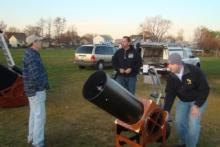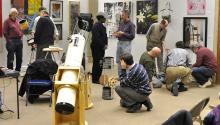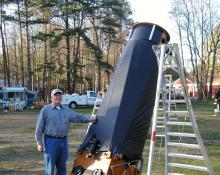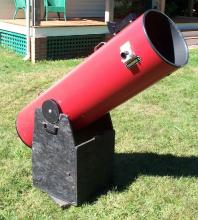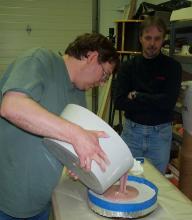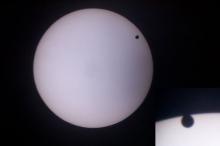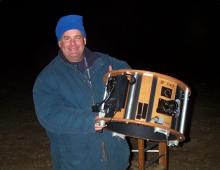Don't miss the meeting, coming up this week!
Feed aggregator
High school students contribute to exoplanet discovery
A group of high school students from Oakland, California, made contributions to the field of exoplanet research. Researchers worked with the students to use backpack-sized digital smart telescopes. These young citizen scientists played a role in observing and confirming the nature of a warm and dense sub-Saturn planet, known as TIC 139270665 b, orbiting a metal-rich G2 star.
Scientists find one of the most ancient stars that formed in another galaxy
The first generation of stars transformed the universe. Inside their cores, simple hydrogen and helium fused into a rainbow of elements. When these stars died, they exploded and sent these new elements across the universe. The iron running in your veins and the calcium in your teeth and the sodium powering your thoughts were all born in the heart of a long-dead star.
Astrophysicist's research could provide a hint in the search for dark matter
Dark matter is one of science's greatest mysteries. Although it is believed to make up about 85 percent of the cosmos, scientists know very little about its fundamental nature. Research provides some of the most stringent constraints on the nature of dark matter yet. It also revealed a small hint of a signal that, if real, could be confirmed in the next decade or so.
Simulated microgravity effects cause marked changes in gene expression rhythms in humans, study finds
Simulated effects of microgravity, created by 60 days of constant bed rest, severely disrupts rhythmic gene expression in humans, according to a new study.
Largest-ever map of universe's active supermassive black holes released
Astronomers have charted the largest-ever volume of the universe with a new map of active supermassive black holes living at the centers of galaxies. Called quasars, the gas-gobbling black holes are, ironically, some of the universe's brightest objects. The new map logs the location of about 1.3 million quasars in space and time, the furthest of which shone bright when the universe was only 1.5 billion years old. The work could help scientists better understand the properties of dark matter.
New research suggests that our universe has no dark matter
A new study challenges the current model of the universe by showing that, in fact, it has no room for dark matter.
Cheers! NASA's Webb finds ethanol, other icy ingredients for worlds
What do margaritas, vinegar, and ant stings have in common? They contain chemical ingredients that NASA's James Webb Space Telescope has identified surrounding two young protostars known as IRAS 2A and IRAS 23385. Although planets are not yet forming around those stars, these and other molecules detected there by Webb represent key ingredients for making potentially habitable worlds.
Explaining a supernova's 'string of pearls'
Physicists often turn to the Rayleigh-Taylor instability to explain why fluid structures form in plasmas, but that may not be the full story when it comes to the ring of hydrogen clumps around supernova 1987A, research suggests. It looks like the same mechanism that breaks up airplane contrails might be at play in forming the clumps of hydrogen gas that ring the remnant of supernova 1987A.
Peering into the tendrils of NGC 604 with NASA's Webb
The formation of stars and the chaotic environments they inhabit is one of the most well-studied, but also mystery-shrouded, areas of cosmic investigation. The intricacies of these processes are now being unveiled like never before by NASA's James Webb Space Telescope.
Nasa’s Webb, Hubble telescopes affirm universe’s expansion rate, puzzle persists
When you are trying to solve one of the biggest conundrums in cosmology, you should triple check your homework. The puzzle, called the 'Hubble Tension,' is that the current rate of the expansion of the universe is faster than what astronomers expect it to be, based on the universe's initial conditions and our present understanding of the universe's evolution.











